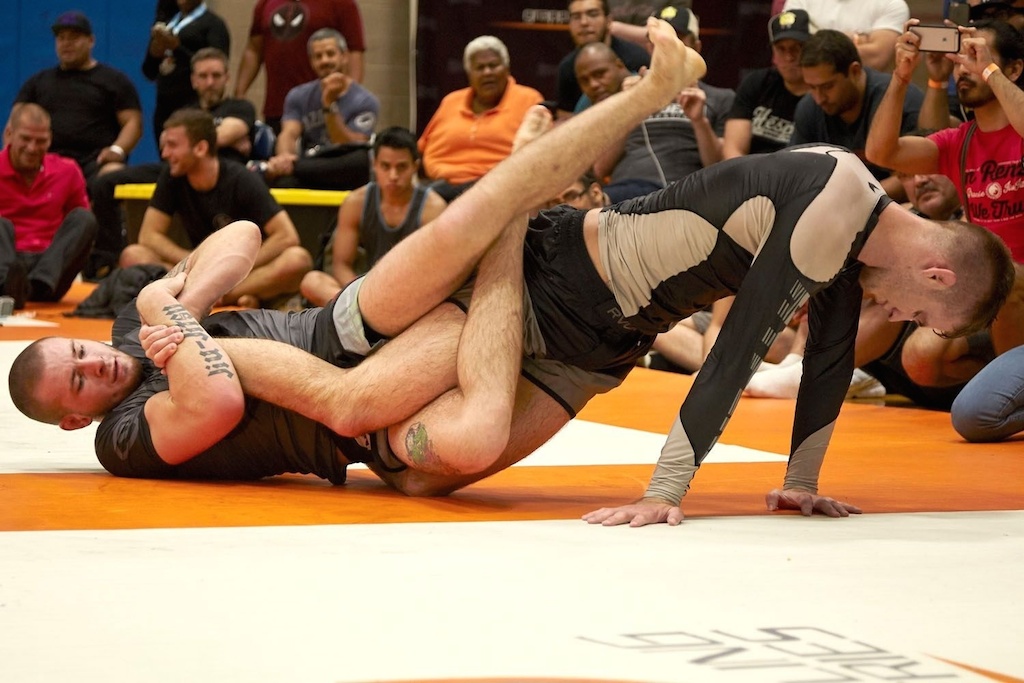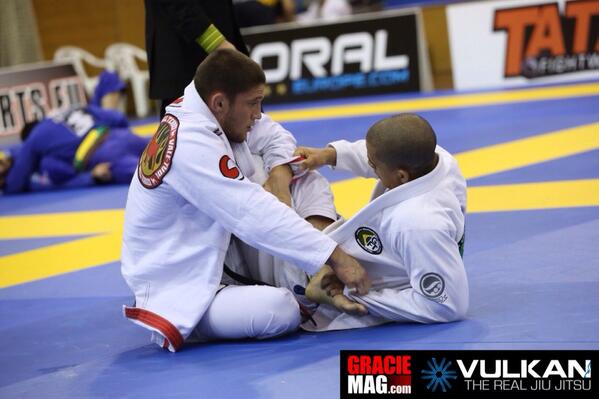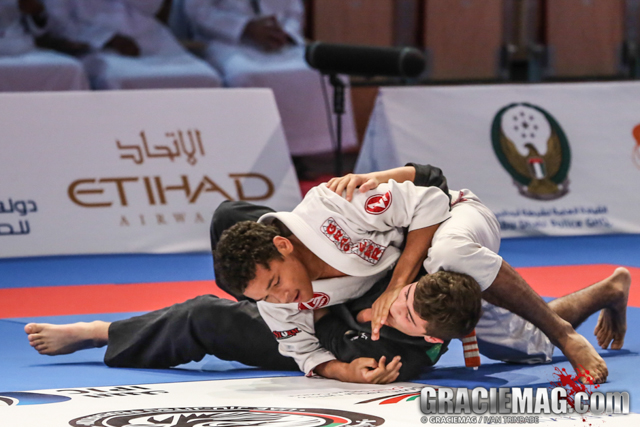
Gordon Ryan, a big standout of ADCC 2017, attacks Keenan Cornelius in a no-gi match. Gallerr.com
Adapted from an article by Jiuliano Leon *
During the 2017 ADCC Worlds, held last September in Finland, I noticed that some friends were surprised by the number of wins by black-belts theretofore unknown to fans of competitive BJJ. Me, I chose to smile, applaud and give kudos. Congratulations, BJJ community; welcome to the era of specialization in sport.
Jiu-jitsu is a curious sport, because it is a thousand years old at the same time it’s young — in its roots, it was practiced by samurai in Japan, but the first BJJ world championship took place in 1996. That being the case, it keeps taking long steps toward maturity and evolution — an evolution that may never end.
So was it really surprising to see some established stars of competitive BJJ not display the same level of performance under the rules and peculiarities of the ADCC? Is it that big of an upset for lesser-known athletes in classical BJJ to secure medals?
I beg your pardon, but I’ll attempt to answer with a few questions:
Would you bet your hard-earned money on Usain Bolt in a 5k? Or on Michael Phelps to win a cross-sea swim race?
I wouldn’t. And that doesn’t mean Bolt doesn’t have perfect technique, or that Phelps didn’t train enough. They are different specialties.
One must only look around to better understand these parallel paths taken by BJJ and the ADCC. Let’s consider soccer.
The reader may or may not know how beach soccer rose in Brazil and the world. The first national beach soccer teams were made up of former professional soccer players around the age of 40 who were familiar with the beach, such as Leovegildo Júnior. Then came massification of the sport via Fifa and TV, and young athletes came along who were specialists of the sand game, without ever having stepped on a grass pitch.
A similar example comes from beach volleyball, where retired champions would put on the visor and secure trophies and spots in the Olympics among doubles. I believe even in tennis we can draw this conclusion — there are players who are much stronger on clay than they are on grass. Finally, it’s worth noting the evolution in professional MMA: it’s unimaginable for a purely classical BJJ fighter to take off his gi today and win a UFC belt overnight, but that exact thing happened in the 90s.
The absolute triumph by Felipe Preguiça, the latest win by André Galvão and the third title by Rubens Cobrinha, of course, aren’t surprising either, given how deeply these three study no-gi grappling. Black-belts who put on the gi will have a wider, more complete, more intelligent view of ground techniques. But the 2017 ADCC Worlds gives us an indication that dedication and specialization in a sport will become a progressively more common path for those who want to win in that particular sport. Now we wait to see whether ADCC 2019 establishes a trend.
My bet: in ten years, no-gi champions will be a completely separate group from the stars of competitive BJJ. Farther down the line, these two groups may develop different behaviors, cultures, training philosophies and physical shapes — we will probably be able to tell, from afar, whether that guy approaching is an athlete of BJJ or no-gi.
Welcome to the evolution and professionalization of the sport.
* Jiuliano Leon is a teacher of judo and BJJ trained by Alliance Rio.



